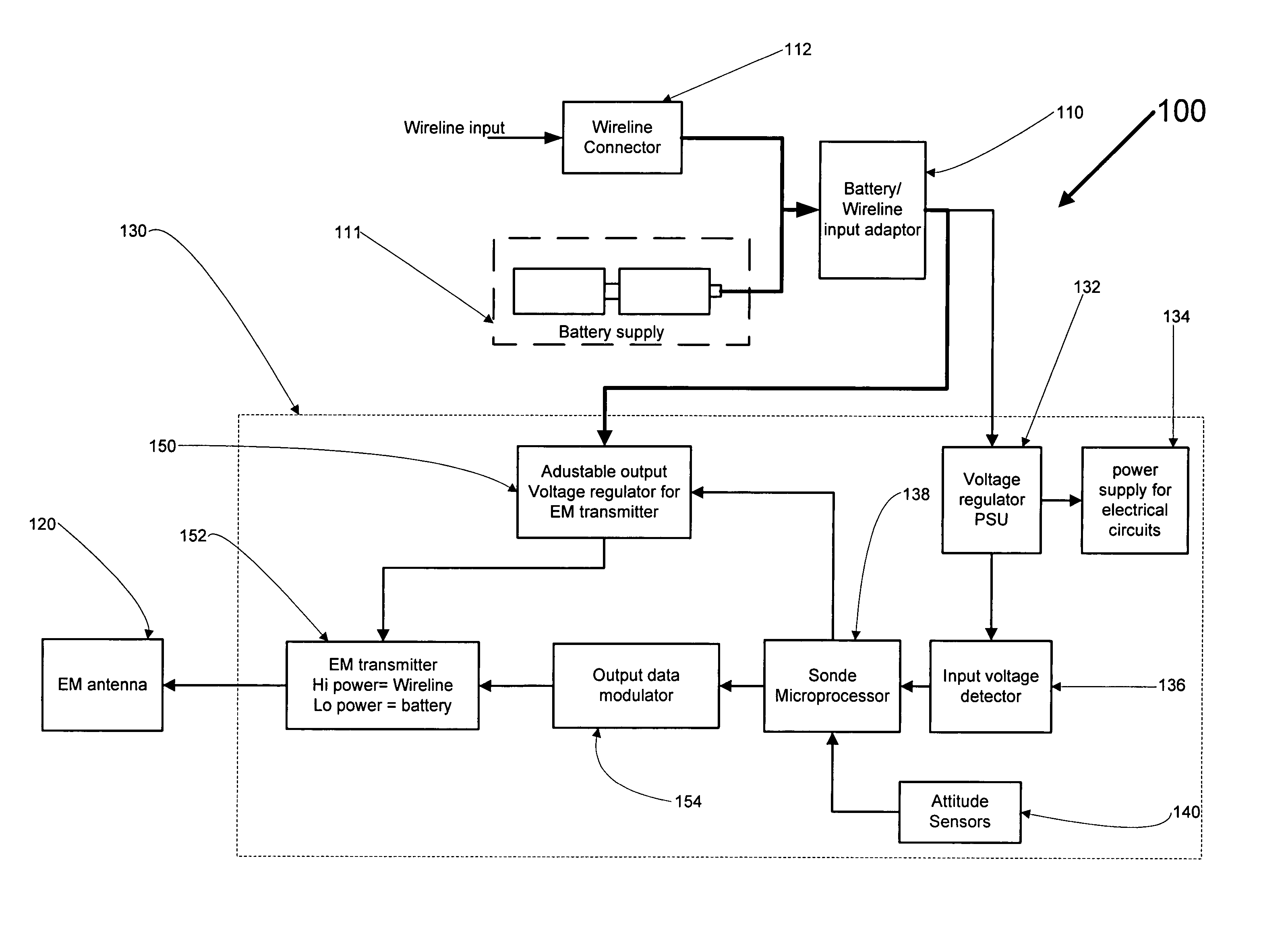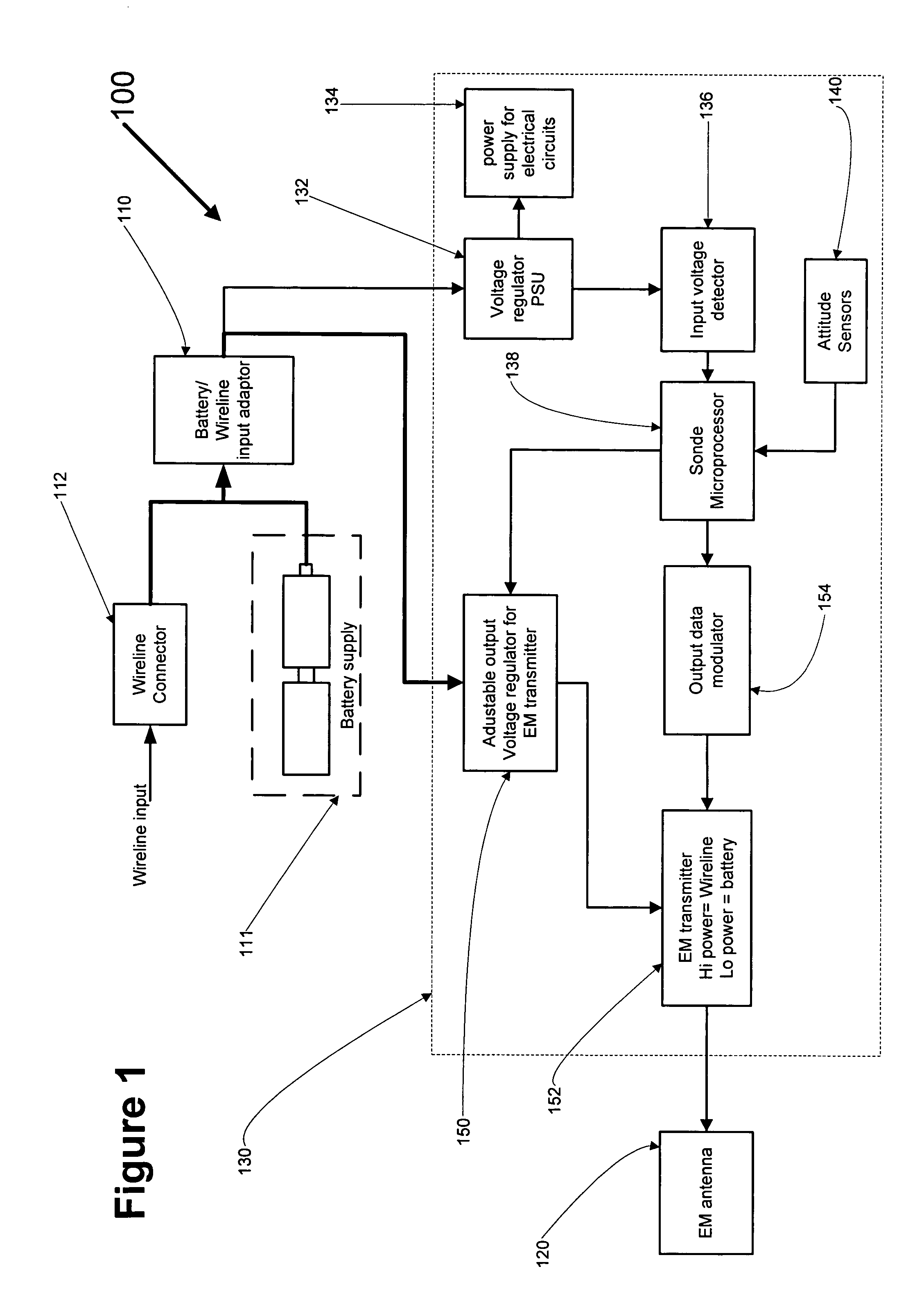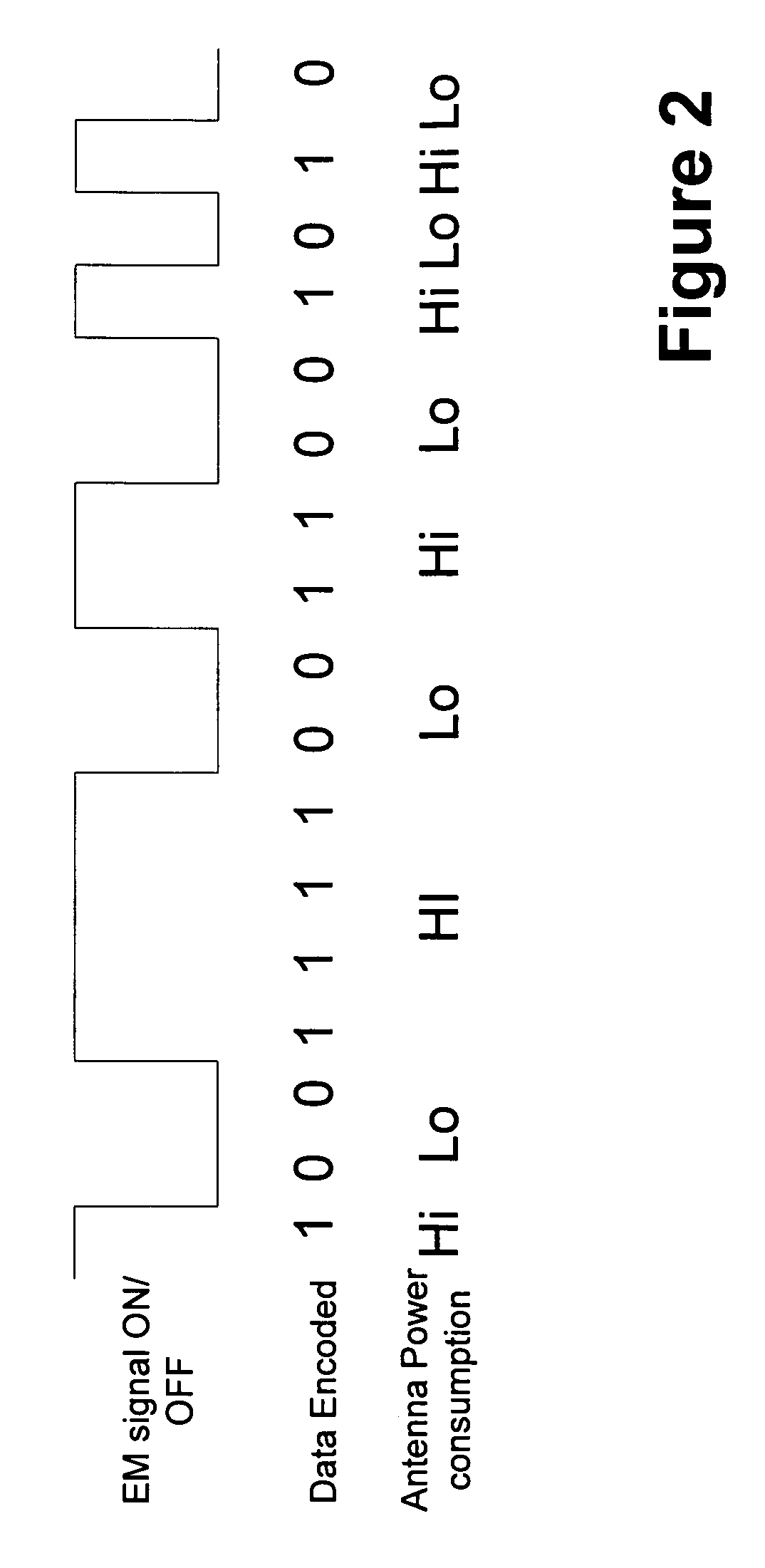Underground object locator
a locator and underground technology, applied in the field of downhole locators, can solve the problems of inability to choose the communication method between ground and surface, unsatisfactory, and dependent, and achieve the effect of reducing the effectiveness of the sonde communication channel and wasting module energy in heating the battery
- Summary
- Abstract
- Description
- Claims
- Application Information
AI Technical Summary
Benefits of technology
Problems solved by technology
Method used
Image
Examples
first embodiment
[0035]FIG. 1 shows a data sonde 100 according to a The data sonde 100 comprises a power supply receiving unit 110, which receives either a wireline 120 from a surface control unit, or one or more batteries 125 for alternative power of the data sonde 100 when a wireline 111 is not connected to it through the power supply receiving unit 110.
[0036]An antenna 120 is also provided, which is connected to the power supply receiving unit 110, and which emits an electromagnetic signal. Control circuitry 130 is also provided, which controls the emission of the antenna 120.
[0037]The power supply receiving unit 110 comprises a female recess, into which can be placed either one or more batteries 111, or a male connector 112 from a wireline, depending upon whether the sonde 100 is to be battery powered or wireline powered. The antenna 120 is controlled by the control circuitry 130 and radiates an electromagnetic field for use in determining the location of the sonde 100, which can be detected by...
fourth embodiment
[0059]FIG. 10 shows a surface control unit 1000 that could be used with the sonde of the The surface control unit comprises a microprocessor and serial data encoder 1002, connected to a user display 1004, a user interface 1006, and a voltage modulated power supply 1008.
[0060]The microprocessor 1002 receives parameters and instructions from the user interface 1006, which can be used to configure the sonde. The user display 1004 shows the current operation and other characterisics and data relating to the sonde, and, where the surface control unit 1000 is modified to include features of the surface control unit of the first embodiment, shows data received from the sonde along the wireline. The microprocessor 1002 controls the voltage modulated power supply 1008 to send data as voltage modulations along a wireline 1010, to the sonde, where the data is decoded as described above.
[0061]As described above, the voltage output from the surface control unit 1000 is modulated to send data to...
PUM
 Login to View More
Login to View More Abstract
Description
Claims
Application Information
 Login to View More
Login to View More - R&D
- Intellectual Property
- Life Sciences
- Materials
- Tech Scout
- Unparalleled Data Quality
- Higher Quality Content
- 60% Fewer Hallucinations
Browse by: Latest US Patents, China's latest patents, Technical Efficacy Thesaurus, Application Domain, Technology Topic, Popular Technical Reports.
© 2025 PatSnap. All rights reserved.Legal|Privacy policy|Modern Slavery Act Transparency Statement|Sitemap|About US| Contact US: help@patsnap.com



